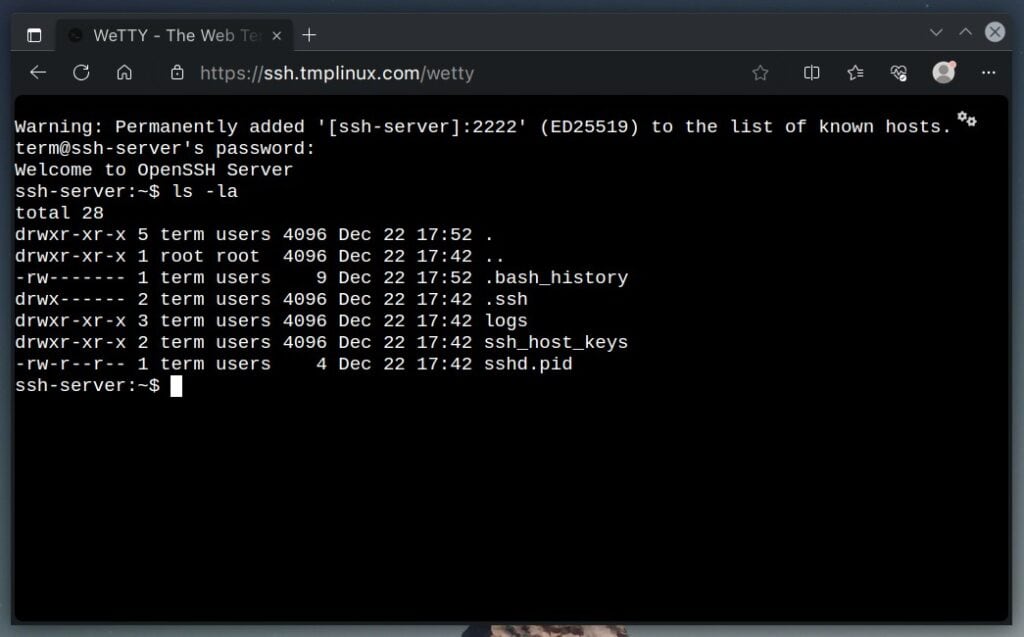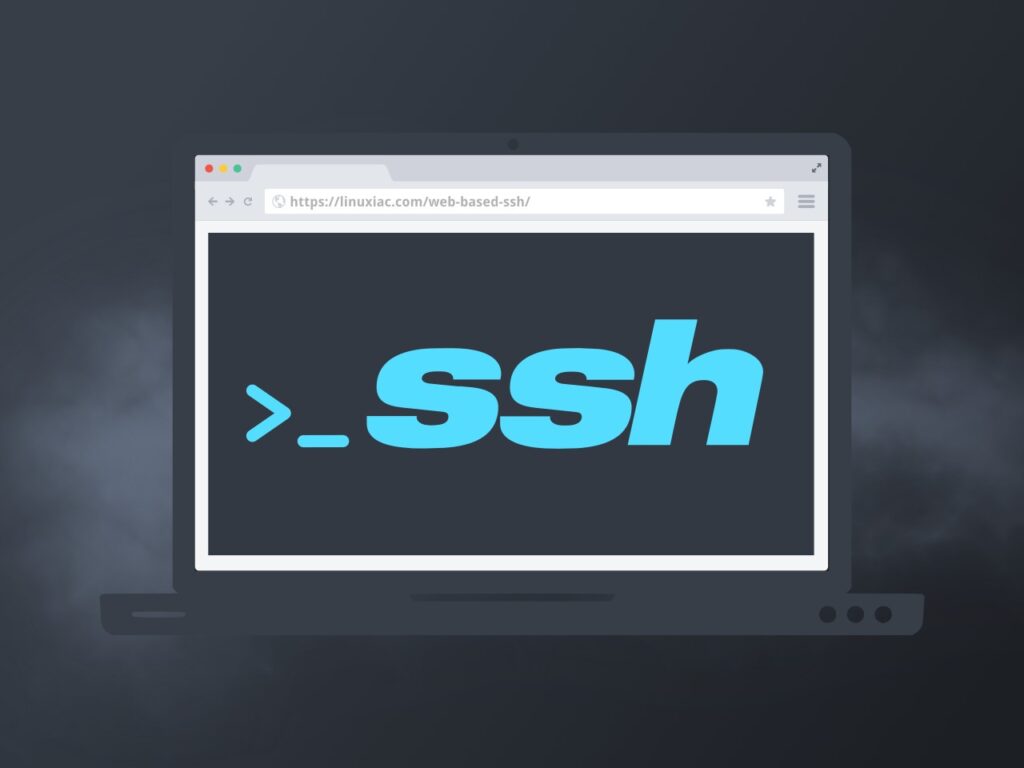Can you truly access your servers from anywhere, anytime, just by using your web browser? The answer is a resounding yes, thanks to a suite of tools and technologies that bring the power of Secure Shell (SSH) directly to your fingertips, regardless of your location or device.
The ability to securely manage and control remote servers has become an indispensable part of modern computing. Whether you're a seasoned IT professional, a developer working on a project, or simply someone who needs to access their data remotely, the traditional methods of SSH accessusing command-line interfaces or dedicated terminal emulatorscan sometimes feel clunky and restrictive. Imagine a world where you can effortlessly connect to your servers, network devices, and other systems from any device with a web browser, no matter where you are. This vision is not just a fantasy; it is a practical reality, made possible by innovative web-based SSH clients that leverage the power of modern web technologies.
This article delves into the fascinating realm of web-based SSH, exploring the different tools and techniques that allow you to establish secure connections to your remote servers directly through your web browser. We'll examine the underlying principles of SSH, the various web-based clients available, and the practical steps required to set them up and utilize them effectively. From the fundamental concepts to the advanced applications, this comprehensive guide provides you with the knowledge and insights you need to harness the full potential of web-based SSH, unlocking unprecedented levels of accessibility and control over your remote resources.
Let's first clarify what we mean by SSH. SSH, or Secure Shell, is a cryptographic network protocol that provides a secure channel for accessing a remote server. It enables you to remotely control servers, network devices, and other systems securely over an unsecured network. SSH is a robust protocol that ensures the confidentiality and integrity of data transmitted between the client and the server, making it an essential tool for remote administration, file transfer, and other secure communications. The primary advantage of SSH is its use of strong encryption to protect the data and authentication details from eavesdropping, which is what makes it highly suitable for tasks like accessing a server's command line.
Now, let's explore the tools that bring the power of SSH to the web. These web-based SSH clients allow you to connect to your servers and manage them right from your web browser. They often feature a terminal-like interface and use various techniques to establish a secure connection between the client and the server. Among these clients, WebSSH and Shellinabox are the most notable names. WebSSH leverages the golangs ssh and sftp libraries, and then compiles them into web assembly, therefore allowing you to connect to your server directly from the web browser. Shellinabox, on the other hand, is a more lightweight, web-based terminal emulator that's designed to bring the console to your browser. With these tools, you can quickly install and access a remote SSH terminal on any machine.
One of the main benefits of using web-based SSH clients is their accessibility. Since you can connect to your servers from any device with a web browser, you can manage your resources from virtually anywhere. These tools are particularly beneficial for individuals working remotely, for whom mobility and ease of access are paramount. Whether you are traveling, working from home, or need to access your servers from a public computer, web-based SSH solutions will allow you to connect to your systems safely and easily.
The setup process for web-based SSH clients typically involves installing the client on your server and configuring it to accept connections. Some methods require routing SSH access to the server through a public hostname. However, other approaches, such as using an SSH tunnel, can securely forward traffic from your local machine to the SSH server. To connect over SSH and run a terminal directly in your web browser, various tools, such as Pythons webssh, are available. This setup can be useful for a variety of situations.
The concept of an SSH tunnel is crucial to understand in the context of web-based SSH. An SSH tunnel creates a secure connection between your local machine and the remote server by encrypting all traffic. This setup is very useful if you want to bypass firewalls, access services that are only available on a private network, or to make a less secure network connection secure. In a simple example, you would set up an SSH tunnel that will securely forward traffic from your local machine on port 9090 to the SSH server on port 22. SSH tunnels are a flexible and secure way to establish secure connectivity between your local computer and the remote server.
Another noteworthy tool in this domain is Shellngn, a web-based client that supports SSH, SFTP, Telnet, RDP, and VNC. This tool leverages the capabilities of modern browsers, including HTML5, CSS3, and JavaScript, and even supports video and WebGL rendering. This comprehensive set of features allows you to manage a variety of protocols and devices, offering flexibility and versatility in remote access scenarios.
Moreover, there are open-source solutions like Myrtille that provide web access to servers, desktops, and applications. This open-source tool utilizes the SSH and RDP protocols to transmit user actions from the browser to the remote side through a web gateway. This allows for secure and high-performance streaming of the display and audio, maintaining a constant focus on performance. It works by sending actions from your browser and streaming back the display and audio.
The increasing use of web-based SSH is significantly impacting how IT departments handle zero-trust controls in web applications. Theyre finding that web browsers, reverse proxies, and browser cookies streamline the process. Web applications that previously resided on private networks can now be deployed behind a reverse proxy, like Cloudflare, and accessed through a public DNS address in any web browser.
Sshy is another notable HTML5 SSHv2 web client that uses end-to-end encryption and performs well on modern web browsers. This client also includes consolefish, which enables users to open SSH connections anonymously, which means that the IP address of the connecting web client is not sent to the remote system, thereby enhancing privacy.
In summary, web-based SSH offers a secure, accessible, and versatile solution for remote server management. The tools and techniques we've explored make it possible to connect to your servers from anywhere with a web browser. Whether you need to troubleshoot a server, manage files, or execute commands, web-based SSH provides the power and flexibility you need. As technology continues to evolve, we can expect even more innovative and powerful web-based SSH tools to emerge, further enhancing the way we interact with remote systems.
The journey of the modern web browser has come a long way, as it's now a portal for a wide array of functionalities, including securely accessing your servers from any place. The flexibility of web-based SSH is only increasing as web-based technology keeps evolving. From easy access to enhanced security, web-based SSH is revolutionizing remote server management, making it more convenient than ever before.
With web-based SSH, the possibilities are truly limitless. You are no longer tethered to a specific location or device. You can connect to your servers from the comfort of your home, the bustling atmosphere of a coffee shop, or even while traveling across the globe. The convenience and flexibility of web-based SSH empowers you to stay connected, productive, and in control of your remote resources, no matter where life takes you.



Detail Author:
- Name : Mr. Lemuel Tillman IV
- Email : tamara93@hotmail.com
- Birthdate : 1997-11-29
- Address : 3833 O'Kon Rest Cassandrefurt, AR 73904-3065
- Phone : (908) 263-0656
- Company : Volkman, Steuber and Leffler
- Job : Coaches and Scout
- Bio : Adipisci perspiciatis aut a id enim voluptatum ratione eius. Et cum laudantium aliquid adipisci ut corrupti mollitia. Et dolorem dolores repudiandae similique minus odio eaque.